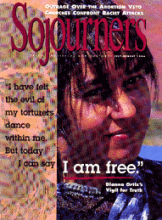Catholic religious congregations these days find themselves in uncharted waters as they increasingly move toward internationalizing their communities. For a variety of reasons, women’s and men’s orders find a multiplicity of nationalities represented in their local houses. Once again these sisters and brothers serve as models and mentors of what could be in the wider society.
Our country once prided itself on the half-truth that we were a “melting pot,” a homogenized, standardized people formed out of the variety of ethnic groups arriving on our shores. We believed that every group got an equal shot at that euphemism “the American Dream.” Only recently have we begun to listen as the minorities in our midst show us the fallacy of America as the successful melting pot. They have told us to look at the record and see how for decades the “pot” contained a whole people that could be bought and sold as property; how each generation of immigrants suffered mightily at the hands of the majority here; and how people of color continue to suffer the effects of America’s original sin— racism.
More recently we’ve heard multiculturalism held up as a better goal for America. Not a bad way to express it. Americans do after all represent and to some extent celebrate the distinctive gifts each group brings to the commonweal. We generally see ethnic diversity as a strength, despite examples like Proposition 187 which would deny our country the continuation of that invigorating otherness.
But multiculturalism by itself runs the risk of dividing us further, or polarizing the various races and nationalities among us. It could lead us into ghetto-like mentalities—each culture living by itself, without interference from any other. Multiculturalism, I submit, needs a further ingredient that religious congregations model today—the lived-out ideal of the international community.
Read the Full Article
